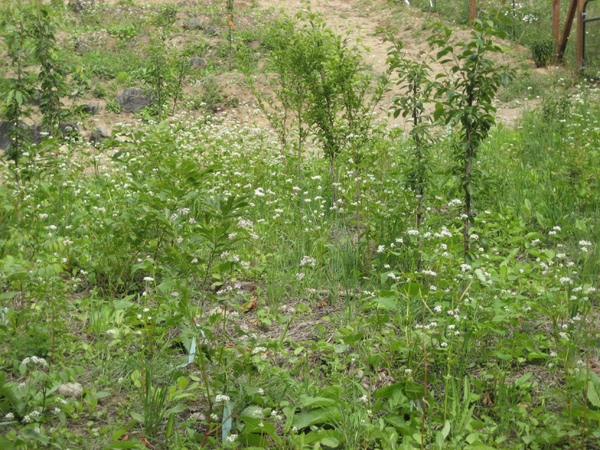Companion Planting

Companion Planting .....
the blending of many varieties of plants to provide a benefical habitat for all plant community members. Taller plants provide protection for lower growing and shade tolerant plants, deeper rooted plants bring moisture up to the surface for shallow rooted plants. With correct planting, the community regulates the nutrients in the soil ie legumes add nitrogen; as well as providing insect management; ie by planting African Marigolds.
For a deeper discussion of the benefits and practices of Companion Planting, as well as a list and the uses of different plants, we have provided the website links below for your information.
www.gardenpermaculture.com/companion.html
The following list was provided from memory by Sepp Holzer.
To this we have added herbs that were purchased specifically for the Yelm project site. Remember that each soil type has different aspects that will dictate the plants that are needed to create the optimal environment in order to give the highest yield from the land.
Coarse Crops -
Grains - different varieties of Rye and Wheat, such as Kamut, Emmer, Spelt;
Sunflowers;
Rice; Dry Rice;
Different varieties of Millet;
Amaranth
Fine Crops -
Many varieties of Lettuce
Kohlrabi
Varieties of Cabbage
Varieties of Beets, turnips and rutabaga
Varieties of Radish
Varieties of Carrots
Varieties of Poppies
Varieties of Clover
Add to this list -
Medicinal Herb seeds such as German Chamomile, Yarrow, Anise-Hyssop, Wild Bergamot, Borage, Calendula, Echinacea, Feverfew, Soapwort, Sorrel, Lovage, Valerian, Vervain (Blue), Woad, Milk Thistle, St Johnswort, Black Cohosh, Ginseng, Purslane, Marshmallow.
Poisonous plants such as Monkshood, Common Foxglove and Lupine.
